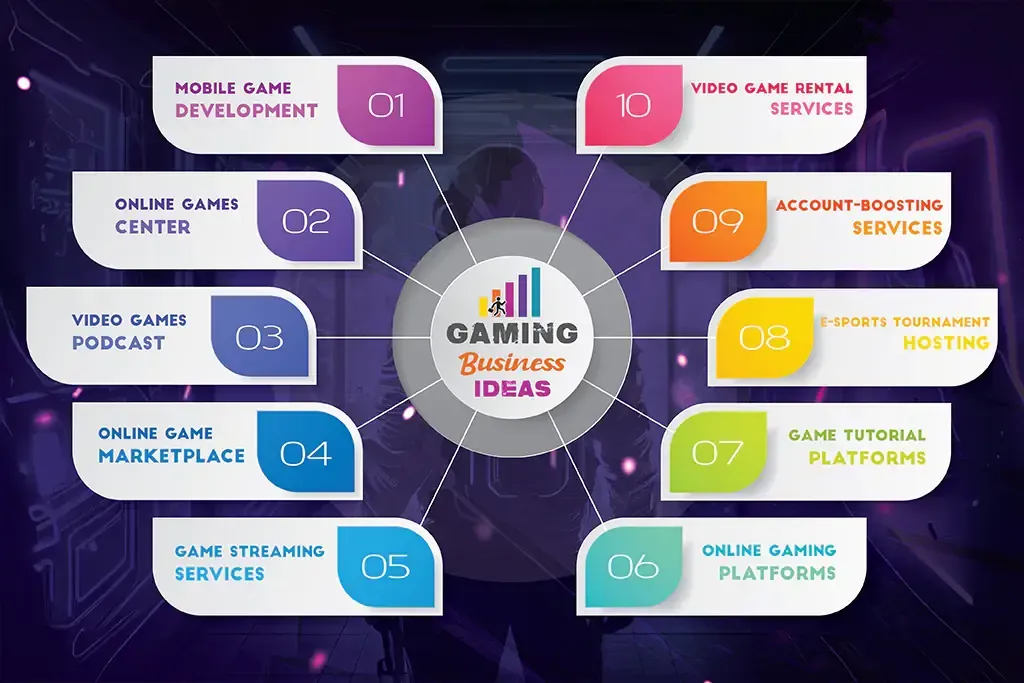Business of games is more than art and code; it is a living, evolving system where ideas, teams, financiers, platforms, and audiences collide to create value at scale, shaping careers, communities, and the broader digital landscape. From the earliest indie projects to blockbuster AAA productions, the video game industry threads together talent, funding, and distribution as a driver of growth, resilience, and cultural impact. Understanding this space means looking beyond gameplay to how products are funded, how communities form around them, and how revenue models support sustainable creativity for developers and players alike. Developers, publishers, and platform partners align on roadmaps, milestones, and monetization strategies that balance player trust with commercial viability and long-term partnerships. In short, the business of games determines what gets built, how it reaches audiences, and how studios scale their creative ambitions while navigating platform shifts, regulatory considerations, and the evolving expectations of players worldwide.
From a different angle, the topic reads like a digital entertainment economy where funding, distribution, and community engagement drive outcomes and shape competitive advantage. If you segment the market into small indie game development studios and large publishers, you can see how risk, talent, and partnerships influence roadmap choices, release timing, and platform strategy. Alternative funding models, cross-platform releases, and ongoing live services redefine how value is created, measured, and sustained over time for both creators and their audiences. A strong approach to marketing and community-building remains essential as platforms evolve, new distribution horizons emerge, and players demand more transparent, authentic experiences.
The Business of Games: Funding, Publishing, and Marketing in the Modern Era
Beyond the thrill of a well-designed level, the business of games charts the flow of ideas from concept to shelf, driven by funding choices, publisher partnerships, and targeted marketing. In the broader video game industry, success hinges on aligning creative vision with distribution timing, platform availability, and audience demand.
Indie game development often relies on self-funding, crowdfunding campaigns, government grants, or publisher deals that share risk while offering distribution and marketing support. In contrast, AAA game development uses long-term financing, co-development agreements, IP ownership considerations, and sophisticated monetization planning. The terms of game publishing and funding shape who controls IP, who pockets profits, and how marketing budgets are allocated. Across both ends of the spectrum, the goal is sustainable growth built on fair monetization and a robust marketing for games strategy.
From Indie to AAA: Navigating the Spectrum to Build Sustainable Growth in the Video Game Industry
From indie game development to AAA game development, the industry thrives on a dynamic continuum that blends creative risk with scalable production pipelines. Mid-tier studios often bridge the gap by delivering higher production values with leaner budgets than AAA studios, while still attracting publishers, investors, and platform partnerships that diversify funding sources. This spectrum keeps the video game industry healthy by spreading talent, risk, and opportunity across multiple business models.
Monetization strategies and platform choices determine long-term viability. Traditional pricing, live services, battle passes, cosmetics, and subscription models have become common across the industry, but success depends on transparent marketing for games that respects players and sustains trust. Platform policies, distribution channels, cross-platform play, and post-launch support shape release schedules, while publishers and funding partners provide scale to reach global audiences.
Frequently Asked Questions
In the Business of games, how do funding and publishing models differ between indie game development and AAA game development in the video game industry?
The Business of games describes how ideas become commercially viable titles across the industry. For indie game development, funding often comes from self-funding, crowdfunding, grants, or publisher deals that may or may not include IP ownership, while publishers can provide distribution and marketing support along with validation signals. For AAA game development, funding is long-term and risk-managed, with publishers and co-development partners shaping IP rights, platform relationships, and profit-sharing. Understanding these dynamics helps teams plan budgets, timelines, and revenue models that fit their scale and risk tolerance.
What marketing for games strategies are most effective within the Business of games to sustain growth from indie game development to AAA game development?
Marketing for games should align with product milestones and community engagement. Indie teams rely on word-of-mouth, press coverage, and social channels to maximize reach with limited budgets, while AAA campaigns employ global advertising, creator partnerships, and high-profile events. Across the spectrum, a transparent player relationship, authentic updates, and thoughtful monetization (premium pricing or live services) help build trust, retention, and sustainable revenue.
| Topic | Key Points |
|---|---|
| Industry Spectrum (Indie to AAA and Everything In Between) | Spans indie to AAA with mid-sized studios in between; different economics, risk tolerances, and audience expectations; platform availability and market health influence all segments. |
| Funding and Economics | Indie funding from self-financing, crowdfunding, grants, or publisher deals that may affect IP ownership. AAA funding is long-term and risk-managed, with publishers and partners shaping decisions, IP rights, and profit-sharing. Scale matters for scope and risk. |
| Publishing & Distribution | Publishers act as strategic partners offering fundraising, tooling, QA, localization, and marketing. Indies gain distribution and validation signals; AAA relies on long-term platform relations and cross-title monetization. IP ownership and creative control are key negotiation points. |
| Monetization Models | Premium pricing remains viable for many indies; live services and games-as-a-service provide ongoing revenue via passes, cosmetics, subscriptions. Models should balance player value with sustainability and avoid pay-to-win. |
| Development Pipelines | Indies favor streamlined workflows and rapid iteration; AAA uses formal stages (concept to post-launch), with outsourcing and distributed teams. Tooling costs (engines, middleware) shape decisions and time-to-market. |
| Marketing, Community & Engagement | Marketing strategies vary by budget; indie relies on word-of-mouth and press, while AAA executes global campaigns and events. Authentic engagement, early access, and transparency build trust and long-term loyalty. |
| Platforms & Distribution | PC, console, and mobile storefronts shape pricing and post-launch support. Platform policies affect profitability and timing. Trends like cross-platform play, cloud gaming, and streaming influence design and monetization. |
| Mid-Tier & New Models | Mid-sized studios blend independent creativity with scalable production. New funding models (grants, partnerships, accelerators) diversify risk and expand pathways to success. |
| The Challenges | Competition, rising costs, and market saturation challenge discoverability and profitability. Post-launch support and ethical monetization are vital for sustainable reputational strength. |
| The Future | AI-assisted development, cross-platform workflows, and cloud-enabled tooling will lower barriers and boost efficiency. Sustainable growth depends on player trust and responsible monetization. |
Summary
Conclusion: The business of games is a dynamic, multi-faceted field that rewards strategic thinking as much as creative talent. Whether you’re building indie projects or steering AAA development, success requires understanding funding, publishing, monetization, and platform realities. By embracing the spectrum from indie origins to AAA scale, developers can navigate risk, seize opportunities, and sustain growth in the evolving video game industry. The next era of gaming will belong to teams that blend clear vision with disciplined execution, engage thoughtfully with players, and build durable business models for the long term.



